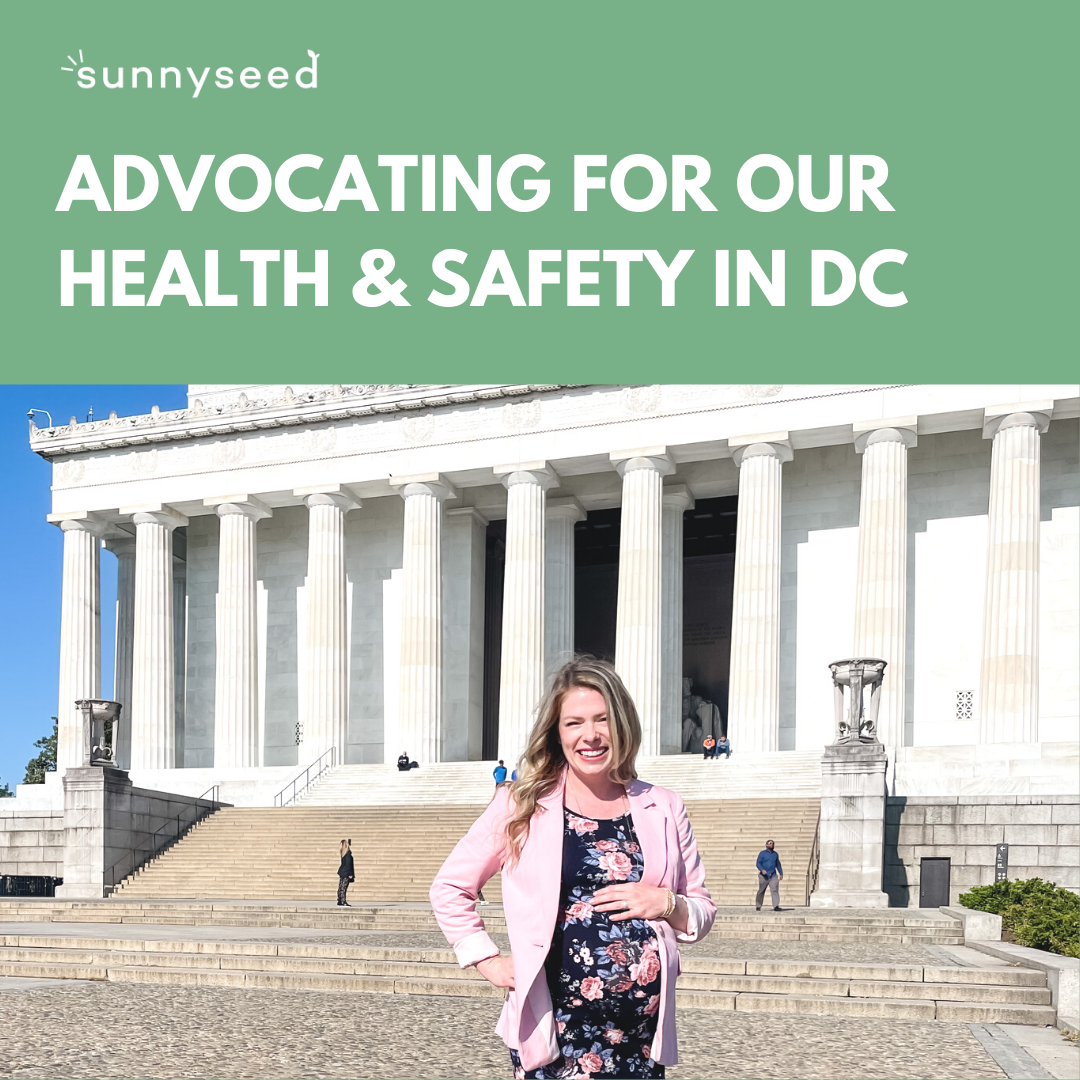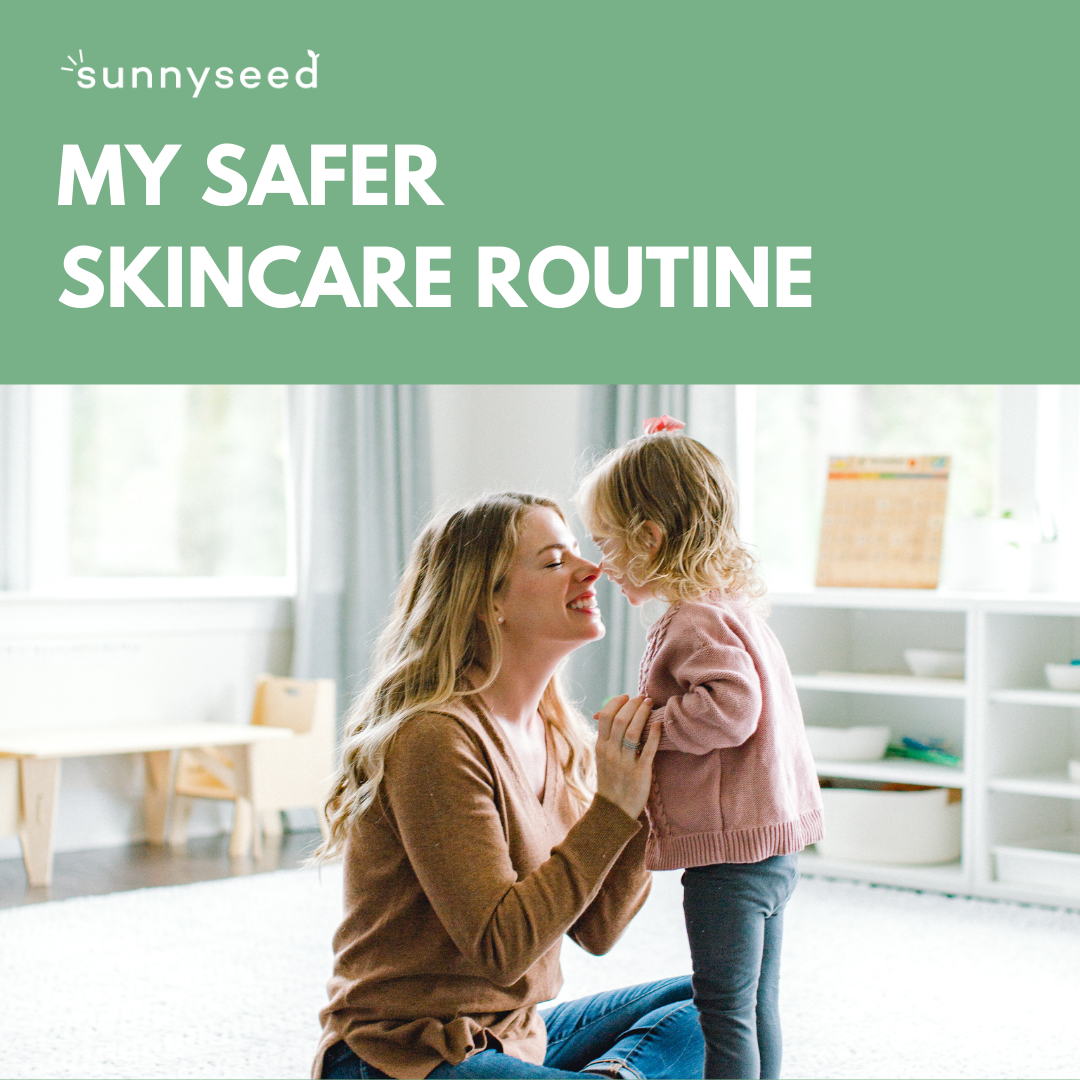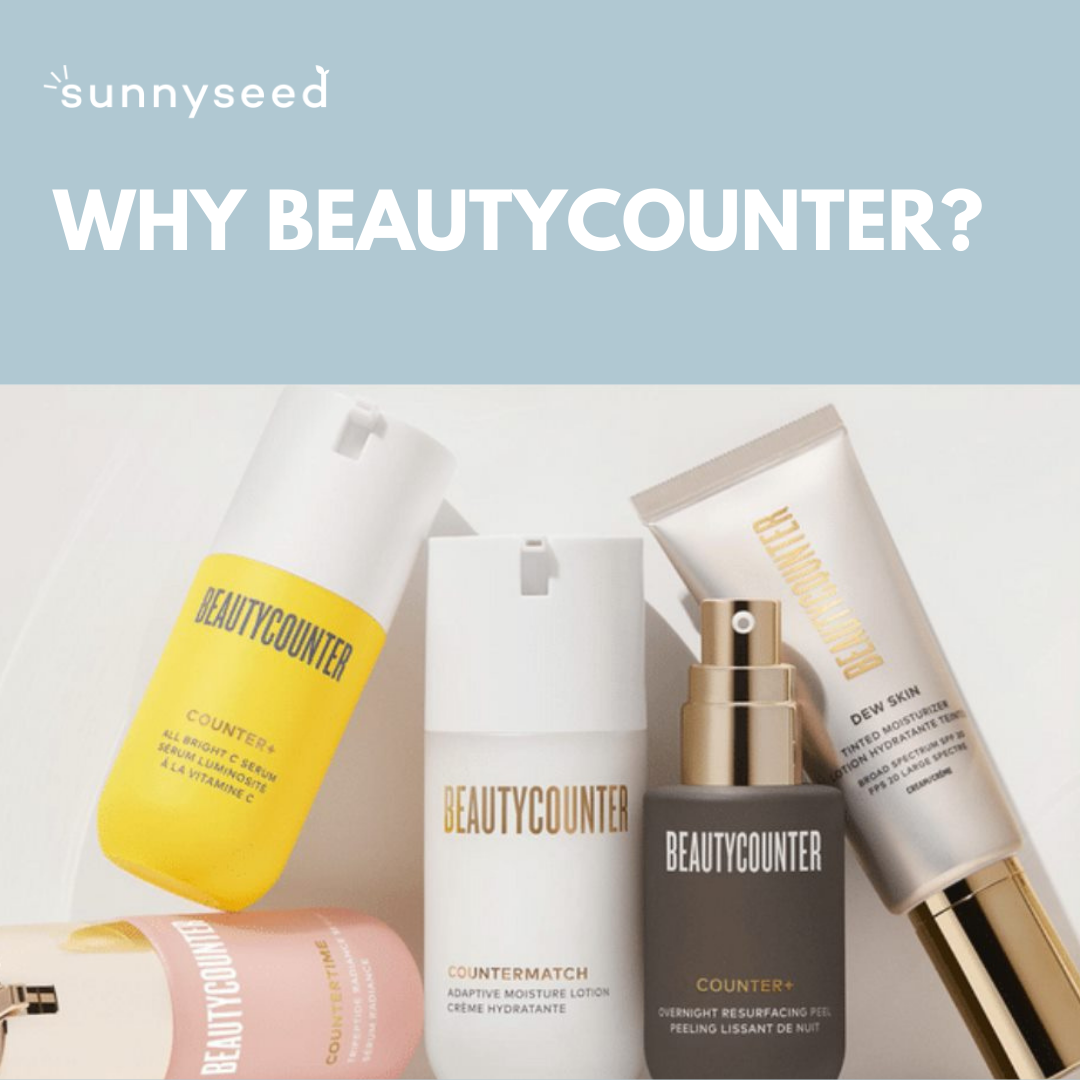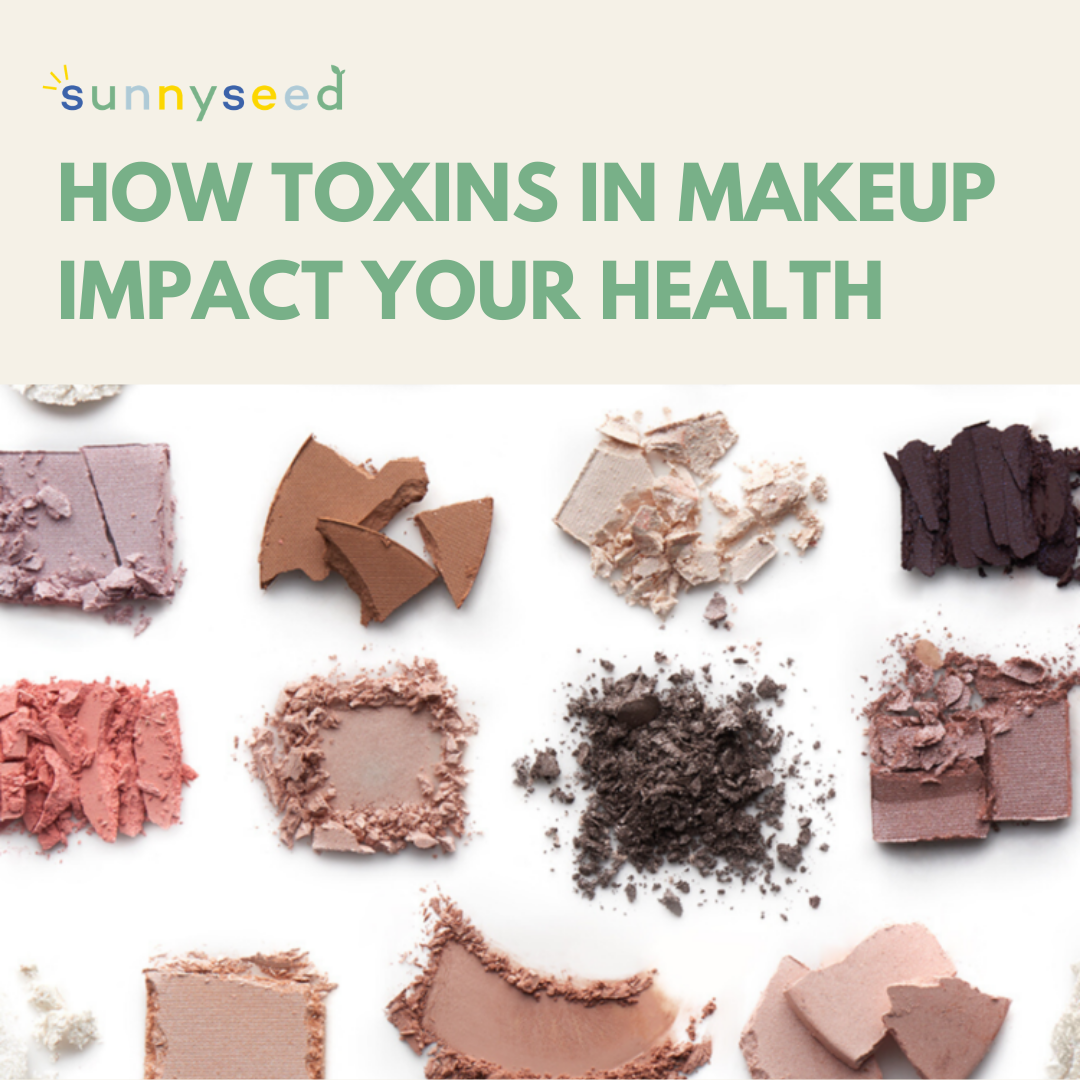How Toxins in Makeup Impact Your Health
Terms like “natural,” “clean,” “green” and even “paraben-free” don’t actually mean anything. Less than 10% of ingredients used in skincare and cosmetic products have ever been tested for safety. The FDA has not updated it’s cosmetic and product safety regulations since 1938 and there’s really no one protecting us or innocent children from harmful toxins that build up in our systems (bio accumulate) and negatively impact our health. [source] Even when a company uses an ingredient that is “banned,” the FDA has no authority to mandate a recall. In 2019 the FDA requested Justice and Claire’s recall 17 products from 2017, proven to be contaminated with asbestos (a carcinogen). Claire’s refused. [source] It infuriates me. There are so many hazardous chemicals in the products we use everyday and many are even hiding behind clever marketing to make us think we are making safer purchases.In this post, you’ll learn about the dangers of:
Hormone Disrupting Chemicals
Heavy Metals
Powdered Makeup
Nano Particles
When we equip ourselves with knowledge and research, we can make informed, confident decisions that positively impact our family. Today I’m diving into makeup, because the average woman puts 168 chemicals on her body every day!
HORMONE DISRUPTING CHEMICALS
As moms, we’ve certainly experienced our fair share of hormones. We know how they can do crazy things in our bodies (and sometimes even make us feel a little cray 🤪). One of the most alarming concerns with the increased number of toxins in our daily environment (to include makeup, water, cleaning products, sunscreen, plastic, and fragrances) is that these chemicals attach or mimic our hormones and cause hormone-disruption. 16 different hormone-disrupting chemicals, linked to early puberty, hormonal imbalances, reproductive concerns, PCOS and more, were found in the bodies of teenage girls. [source]
“The main route of exposure is the skin, but the main endpoint of exposure is endocrine disruption. This is due to many substances in cosmetics and sunscreens that have endocrine active properties which affect reproductive health but which also have other endpoints, such as cancer." [source]
Due to the small size of a child’s kidney and liver, a chemical is 10x more toxic in a child than an adult. [source]
The good news? In several studies, within a week of eliminating toxic chemicals from skincare and makeup products, blood work and urine samples showed a significant decrease in levels of harmful chemicals. [source] Avoid these top offenders:
Phthalates - endocrine disruptors linked to increased risk of breast cancer, early breast development in girls, and reproductive birth defects in males and females. [sources]
Parabens - estrogen-mimicking properties that are associated with increased risk of breast cancer; parabens have been found in biopsy samples from breast tumors.
Fragrance - this term was created to protect a company’s proprietary information (“secret formula”). What’s really infuriating is that a product may say “paraben-free” or “phthalate-free” but actually contain these chemicals in the “fragrance” of the product. I absolutely avoid this term since there is no way of knowing whether or not it contains tons of hazardous chemicals.
Glitter – made of tiny pieces of aluminum and a plastic called PET, which breaks down and releases hormone disrupting chemicals linked to cancer and neurological disease [source]
Sodium lauryl sulfate (SLS) / Sodium laureth sulfate (SLES) - can cause kidney and respiratory damage. SLS can interact and combine with other chemicals to form nitrosamines, a carcinogen.
Formaldehyde and Formaldehyde-releasing preservatives (FRP’s) -deemed a human carcinogen by The International Agency for Research on Carcinogens (IARC). It causes allergic skin reactions and may also be harmful to the immune system.
Toluene - affects your respiratory system, cause nausea and irritate your skin as well as cause developmental damage in the fetus. Toluene has also been linked to immune system toxicity.Side note: Other endocrine disruptors like PVC and BPA are commonly found in children’s toys and plastics. Click here for a list of my safer swaps.
HEAVY METALS
Heavy metals are naturally occurring, but become more concentrated and prevalent through mining and manufacturing. In recent decades, their contamination has increased dramatically because of continuous discharge in sewage and untreated industrial effluents. Because they are non-degradable, they persist in the environment. [source] They have been found in makeup, water, air pollution, food, and even children’s face paint. [source]The effects of heavy metal exposure can include lowered IQ, neurological effects, cancer, irritability, and kidney, lung, and heart damage.Few metals, such as aluminum, can be removed through elimination activities and get accumulated in the body and food chain, exhibiting a chronic nature. [source]
Mercury - Disruption of the nervous system, damage to brain functions, DNA damage and chromosomal damage, allergic reactions, tiredness and headaches, negative reproductive effects (sperm damage, birth defects, and miscarriages).
Aluminum - Alzheimer’s disease, breast cancer, oxidative stress, aluminosis and dialysis encephalopathy syndrome
Cadmium - Anemia, birth defects, impairment of pulmonary function, renal dysfunction, bone changes, liver damage (hepatotoxicity), kidney damage (nephrotoxicity), iron deficiency, oxidative stress
Arsenic - Birth defects, carcinogen: lung, skin, liver, bladder, and kidneys, GI damage, severe vomiting, diarrhea, death
Lead – Miscarriages, disruption of nervous systems, brain damage, infertility, intellectual disorders, anemia, hypertension, kidney damage

Currently, the FDA does not require companies to screen, test, or limit heavy metals in their cosmetics. They provide recommended limits, but if a company discovers dangerous levels of lead in their lipstick, there is no authority to require them to recall the product.99% of lipsticks tested by the FDA contained lead. A study by University of California researchers found nine toxic heavy metals in over 400 lipsticks and lip glosses. Even Burt’s Bees contained heavy metals! [source]
There is no safe level of exposure to lead, and because it’s a neurotoxin, it’s particularly dangerous to children’s brains. Heavy metals are frequently found in makeup because they contaminate the colorants that companies use, whether those colorants are intentionally mined from the Earth or synthetic. It’s also important to note that “natural” brands often use clay or mineral based ingredients of the earth and they often test the highest in heavy metals.The only way to know if makeup and personal care products contain heavy metals is to test them. Not just one time at sourcing, but regularly at every stage of sourcing and production to ensure that levels do not change as the supply chain is modified over time. Beautycounter TRIPLE TESTS at sourcing, production, and post-production. I don’t know of any other company that takes safety this seriously.
POWDERED MAKEUP
Most powdered makeup is made from minerals, which sounds safe, right? Minerals are from the Earth. The danger lies in how these minerals are extracted.
Talc, a mineral commonly found in powdered makeup, is most commonly laced with asbestos. Asbestos is a known carcinogen. Carcinogen = causes cancer.Sadly, the FDA can’t do anything about it. Johnson and Johnson knew that asbestos lurked in their baby powder back in the 70s, but didn’t do anything about it for decades. $417 million was recently awarded in a lawsuit tying Johnson’s baby powder to cancer. There have also been high levels of asbestos found in many children’s makeup products, including (but not limited to), products from Claire’s, Justice, and Amazon. Asbestos fibers can be inhaled and become lodged in the lungs, and can cause grave, often fatal, illnesses whose symptoms may not become evident for decades after exposure.
Again, the only way to know for sure if asbestos or heavy metals are in powders used for makeup is to test. (Yep, you guessed it. Beautycounter tests multiple times and is asbestos free!)
NANO PARTICLES
While we’re on the topic of makeup powders, it’s important to be aware of nano particles that can be inhaled, which happens during makeup application and long-term wear on the face. Scientists tracked the flow of nanoparticles from the lungs to the bloodstream They found that nanoparticles between six and 34 nanometers in diameter were able to get past the lung’s defenses to reach the lymph nodes and the bloodstream. [source] In this study, nanoparticles were detected in urine 3 months after exposure! Now there are some questions about this study, considering administering the drug and our biological protective mechanisms, but there is also a great body of information about the concerns of nanoparticles that give good reason for avoiding nanoparticles when possible. I make sure all of my sunscreen, sprays, and makeup powders are “non-nano.”
TAKE ACTION
Use your voice to ask your Senator to co-sponsor the Personal Care Products Safety Act to ensure safer beauty laws. Click here.
WATCH Toxic Beauty Documentary
DOWNLOAD EWG Healthy Living App to scan product labels and identify their toxicity rating
RESEARCH PubMed Campaign for Safe Cosmetics
WHY I CHOOSE BEAUTYCOUNTER

I began my clean living journey in January 2014, but what I didn't know for years was that the "clean" makeup products I was using could STILL contain harmful contaminants. I tried 34 different brands, all of which did not perform safety testing. On my quest to find the most effective, high-quality products that met my safety standards, I learned about Beautycounter. Initially, I'll admit I wanted to find all of the reasons not to try this company since they had independent consultants in addition to their website, Goop, Sephora, and J.Crew partnership. Ultimately, I couldn't deny their commitment to transparency, regular third party testing, ingredient selection process, and celebrity-worthy performance (Mandy Moore, Connie Brittan, and Reese Witherspoon to name a few). They were - and still are - unlike any other company I've found. As we've learned, unregulated toxins in our cosmetics and personal care products is a very real and serious problem. Beautycounter provides a solution through their formulation, education, and advocacy work. If you'd like to learn more about Beautycounter, please email me at any time!





